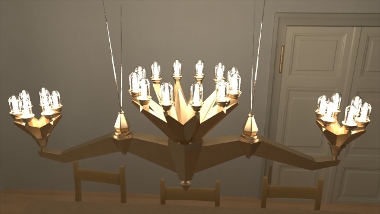



Abstract:It is a long-standing problem in unbiased Monte Carlo methods for rendering that certain difficult types of light transport paths, particularly those involving viewing and illumination along paths containing specular or glossy surfaces, cause unusably slow convergence. In this paper we introduce Manifold Exploration, a new way of handling specular paths in rendering. It is based on the idea that sets of paths contributing to the image naturally form manifolds in path space, which can be explored locally by a simple equation-solving iteration. This paper shows how to formulate and solve the required equations using only geometric information that is already generally available in ray tracing systems, and how to use this method in in two different Markov Chain Monte Carlo frameworks to accurately compute illumination from general families of paths. The resulting rendering algorithms handle specular, near-specular, glossy, and diffuse surface interactions as well as isotropic or highly anisotropic volume scattering interactions, all using the same fundamental algorithm. An implementation is demonstrated on a range of challenging scenes and evaluated against previous methods. Publication:
A Markov Chain Monte Carlo Technique for rendering scenes with difficult specular transport Wenzel Jakob, Steve Marschner ACM Transactions on Graphics (Proceedings of ACM SIGGRAPH 2012) Supplementary material:Expanded technical report (PDF) | Code | Video (high-res, 103 MB) | Video (low-res, 45 MB) Talk video: |